Re-imagined, redefined, future-proofed. These are the words most often used to describe the ever-growing number of electrified classic cars.
They’re words that serve as bait to the devout petrolheads for whom implanting an e-motor and battery in place of a combustion engine are tantamount to treason, but, dare I say it, certain classic cars are not defined by their power units. I’d argue that the Silent Classics Fiat 500 I drove last year lost little and gained plenty in its electrification, for example.

Justin Lunny, boss of Everrati, feels the same. “In so many cars, their engines weren’t the best thing about them, and their transmissions weren’t the best thing about them. The reason all of our Porsches start life as a low-mileage Tiptronics is because no one wants a Tiptronic!”
So, as a rather lovely Le Mans Blu 1968 W113 Mercedes-Benz SL Pagoda awaits, I wonder how this fits with the ethos.
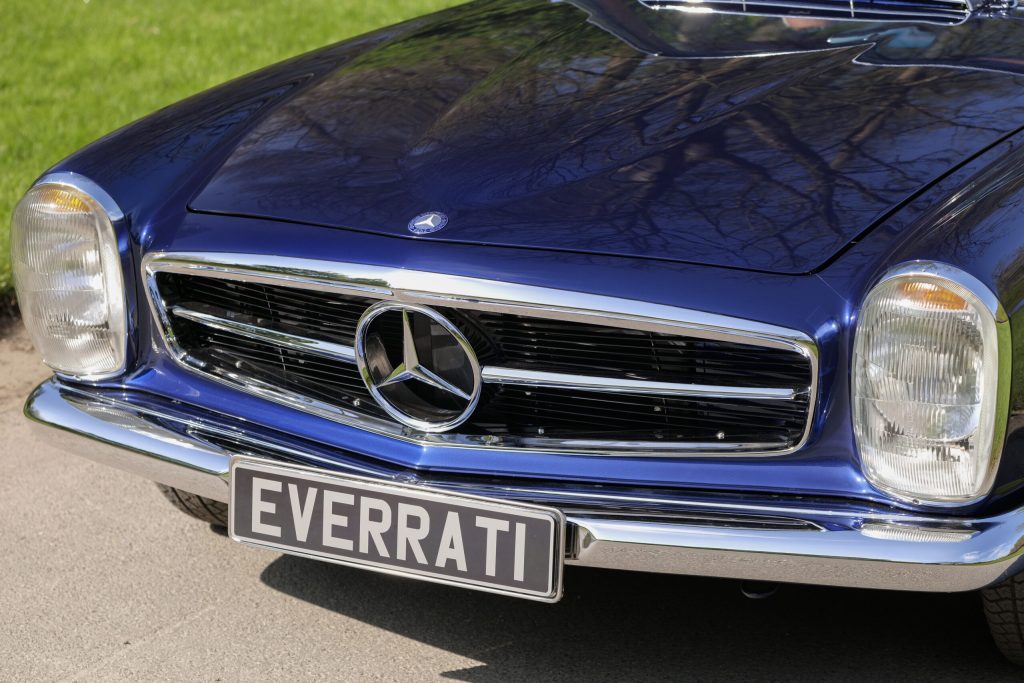
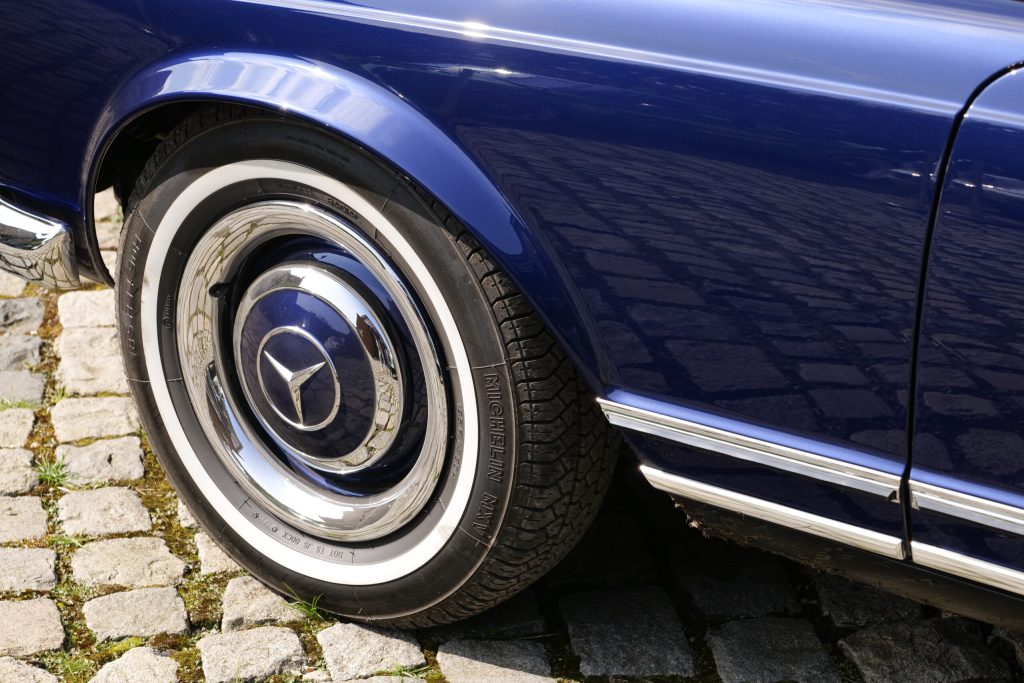
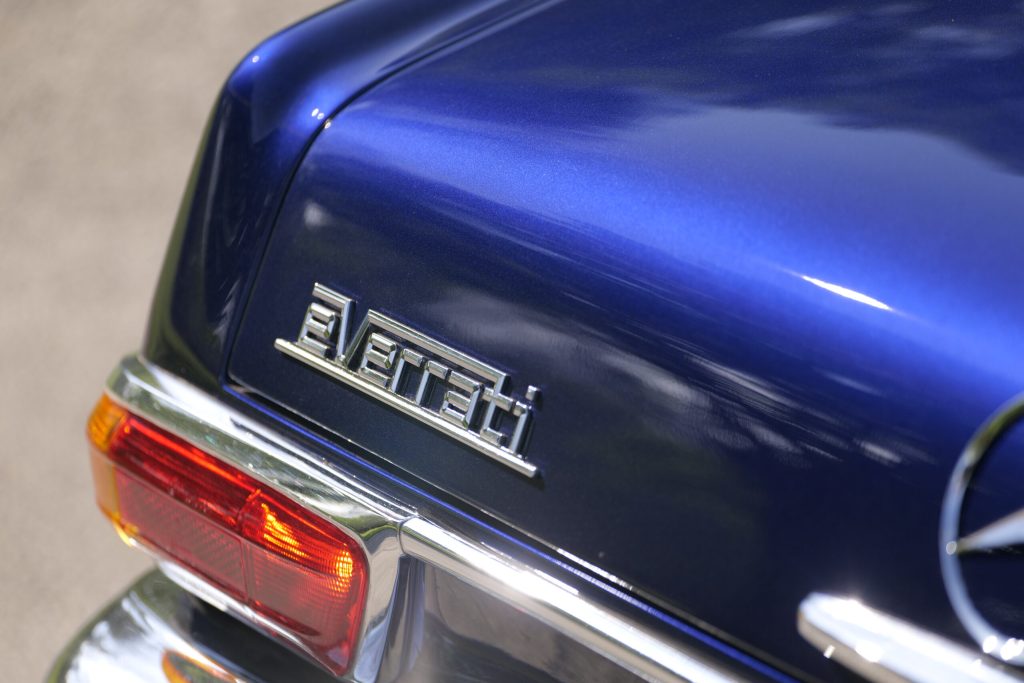
“We’re not after the Holy Grail cars. In fact, the Pagoda started out as a 230 manual, which again, was not really the Holy Grail of Pagodas.”
What’s more, the car was a mess, with a previous restoration attempt having gone awry, and pretty much every panel requiring replacement. Of course, its owner could have restored the powertrain alongside the body and interior, but instead opted for electrification to go along with a comprehensive rebuild.
As we’ve come to expect, the standard of craftsmanship and attention to detail from Everrati is second-to-none. This example was taken back to bare metal; anything resembling rust was removed and replaced with fresh steel and then lavishly painted.
The interior had a total retrim with period-correct Cognac MB-Tex fabric, although Everrati’s partner Bridge of Weir can supply custom leatherwork as desired. It requires a keen eye to spot where the modifications for the electric powertrain have taken place, but on startup a small central digital display goes through a little test routine before allowing progress. The right-hand dial has been recalibrated to show power output rather than engine revs, while the left maintains its role as speedometer.
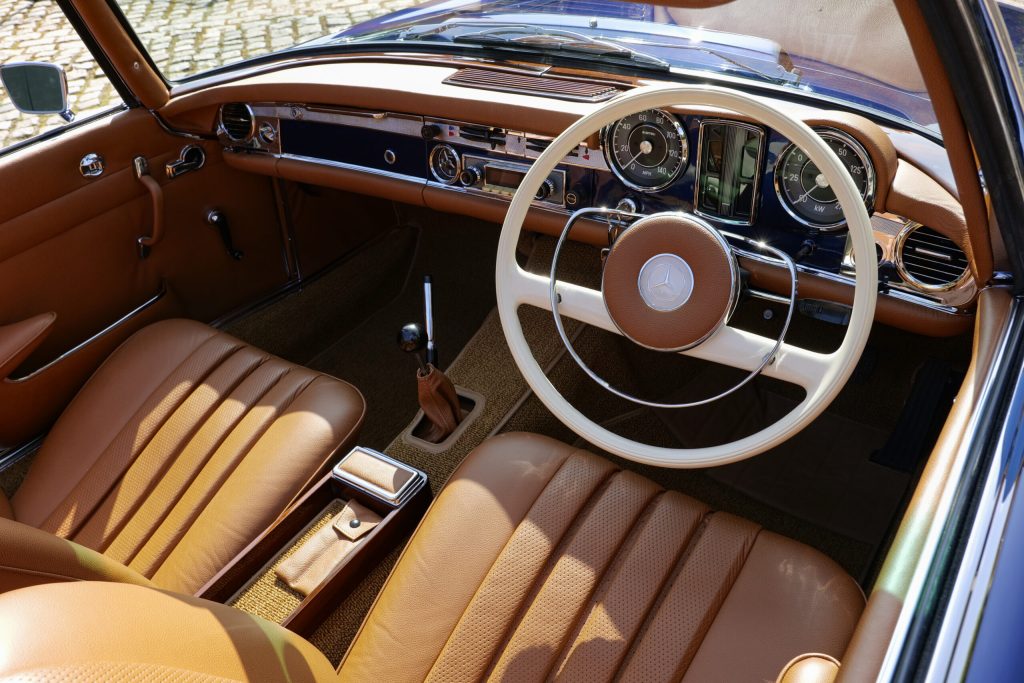
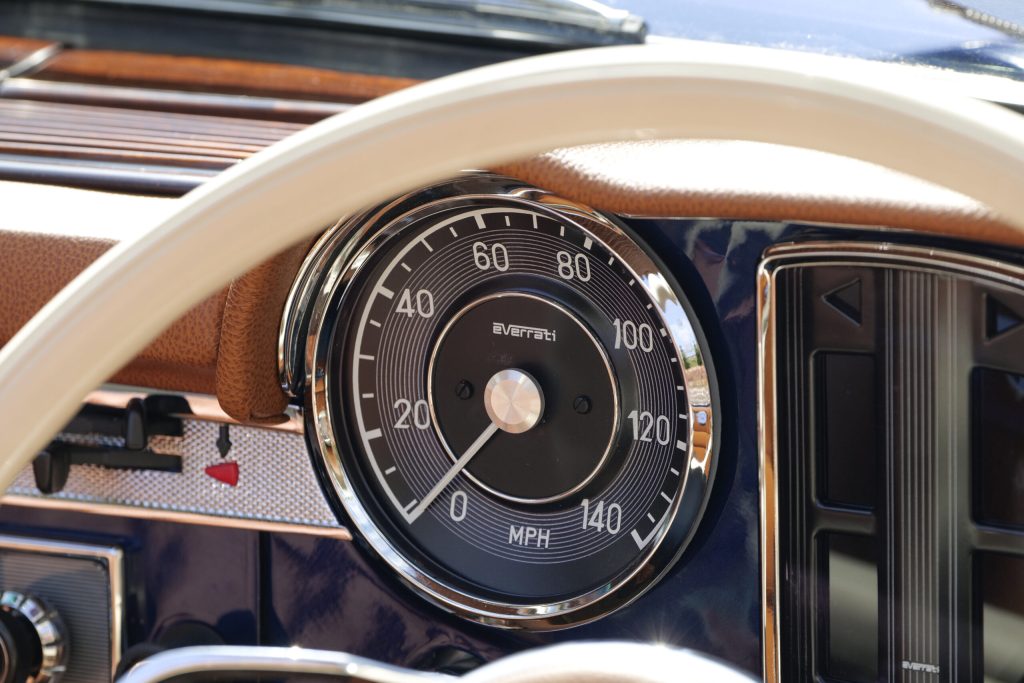
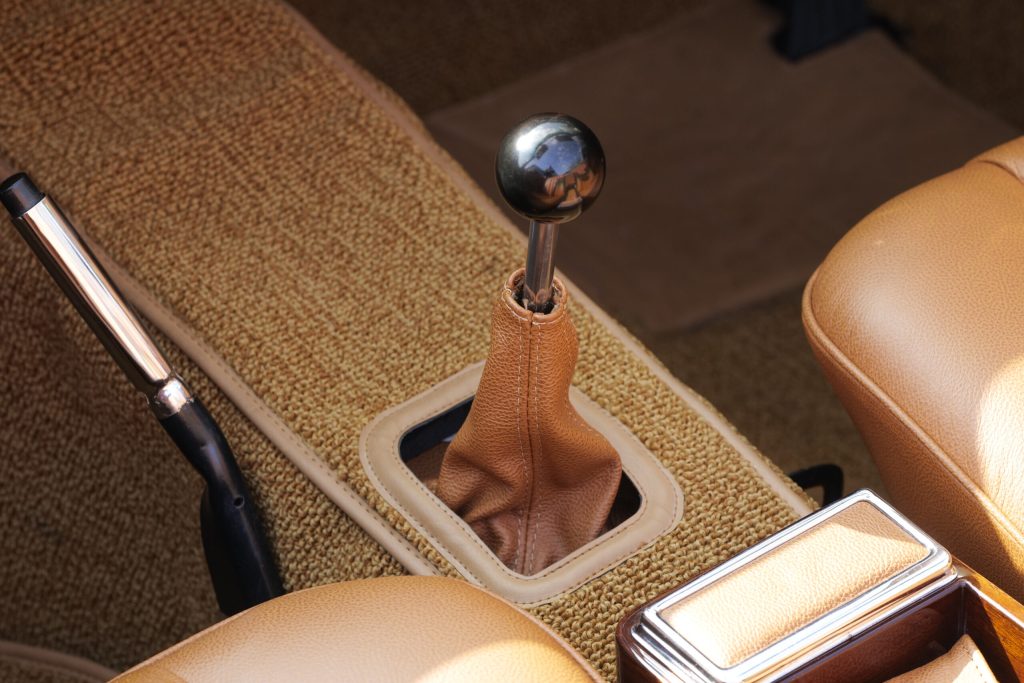
The gear selector looks a lot like a manual, but only shifts fore and aft to select drive or reverse, and while different calibrations of regenerative braking can be offered, about 95 per cent of stopping power in the current setup comes from the big brake pedal.
Next to it, the organ-pedal accelerator requires more travel and effort than I expected to get the SL rolling. It’s a deliberate bid to mimic combustion-style pickup rather than the instantaneous acceleration of today’s EV, and with time, I’m sure it would be easy to get used to.
Meanwhile, the electric-assisted steering requires almost no effort at all, again in keeping with the car’s character.
Adding the electric powertrain, which includes a 300bhp Helix motor of the type fitted to the Lotus Evija, and a choice of 54- or 68-kWh battery, ups the SL’s weight by around 220 pounds, so the springs and dampers are uprated to cope with the extra mass and maintain a period-correct ride height.
Everrati says that the smaller battery can deliver 160 miles of range and a 0–60mph time of less than 8 seconds, while the larger capacity increases driving range to over 200 miles while cutting 0–60 by a second.
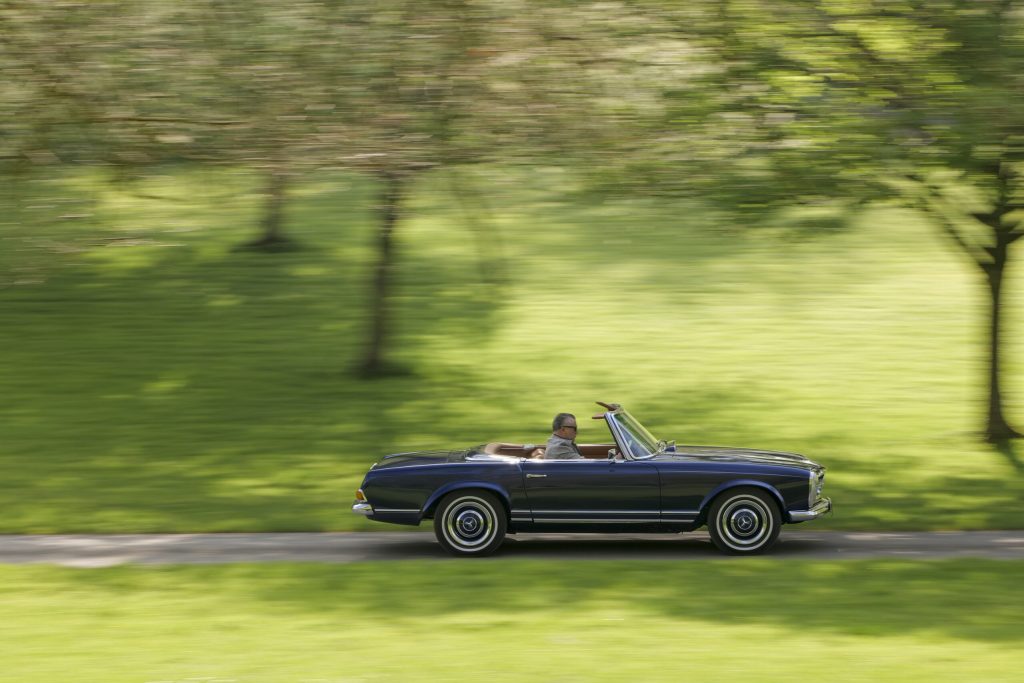
Not that there’s a chance to put any of these claims to the test, as my drive takes place in the grounds of the Wormsley Estate, a 900-year-old pile just west of London, and I have to share the narrow lanes with flocks of freshly-shorn sheep. At least I’m not likely to disturb the cricket match with the sounds of internal combustion.
It’s not exactly silent, however, with quite a lot of whine from the differential, which is all the more noticeable for the lack of intake and exhaust. The car is still a bit of a work-in-progress, so this may well be better contained by the time it’s delivered to its owner.
But who are these customers willing to commission a £330,000 electro-mod such as this? “We were at Pebble Beach and one chap, a collector, was sat there looking around over the lawn. And he said, ‘I’m not sure I want to be doing this anymore’. And I said, ‘why is that’? He said, ‘Well, I’ve got kids, I’ve got grandkids, and this is really a celebration of combustion, and I’m not sure we should be doing it.’”
Lunny says there were plenty more like him, with more than a thousand people requesting further information.
“We create cars for people who have gone EV but still love cars. A lot of our clients have had multiple EVs, principally Teslas in the main, but they still love cars. And actually, this is a way to be cool, be sustainable, and have something that’s really exciting.”










This makes perfect sense. I couldn’t even tell you what most Mercs sound like, and when I see a Pagoda it’s not the visceral, gut punching experience of something like an Mercedes McLaren SLR, it’s a beautiful, serene moving artwork. Anything that keeps things like this on the road for everyone to appreciate is great in my book.
Battery power remains a problem, but once someone figures a better way to store energy in EVs, things will start to gather pace.
I’ve near the end of a restoration of a Pagoda with Hilton and Moss… but it’s ok it’s not a ‘holy grail’ car, being a manual RHD 230 SL. I can assure you that the sublime torquey 6 cylinder engine sounds magnificent and the smooth, knife through butter transmission makes changing gear a pleasure. Worth mentioning that my differential doesn’t whine and it’s cost me a lot less than the ruined car in your article.
Ruined? Seems a stretch.
Pebble Beach concentrates on workmanship, craftsmanship and design. Combustion is semi-incidental. To the guy agonizing, “Stay home.”
No. Just no. This is beyond sacrilege.
Part of the experience of running a classic car is the mechanical sympathy necessary to keep an old internal combustion engine, and a less than perfect drivetrain, running.
Electrification is simply for those people who want to claim that they are classic car fans, but can’t be bothered to make the physical or intellectual investment. They just shell out huge amounts of money for a vapid two dimensional lookalike.
Anyway, the idea that electric cars are in someway clean is a complete myth. Leaving aside the staggering energy and toxic pollution cost of the batteries and the motors, where do you think the electricity comes from? Even a good, modern EV produces typically half the CO2 per kilometre of a well maintained internal combustion engine. And few of us are doing enough miles for it to make any significant dent in global warming.
If you want to save the planet, fly less, eat less meat and stop buying new clothes all the time. Electrifying classics as an environmental sop is just virtue signalling.
There is nothing cool or sustainable about electric cars.
And anyone who thinks an SL230 is in some undesirable clearly has no soul.
Chris,
You said it all so perfectly !!!!!!!!!!!!
I agree with you !!!
I go with all of that. Of course, in our lamentable “modern” philosophical environment, there will always be someone offering to electrify a pretty thing like that SL, but it genuinely is sacrilege. Though, it would be nice to read an article headlined “Philistine stoned to death at Pebble Beach.” And one cannot have the one without the other.